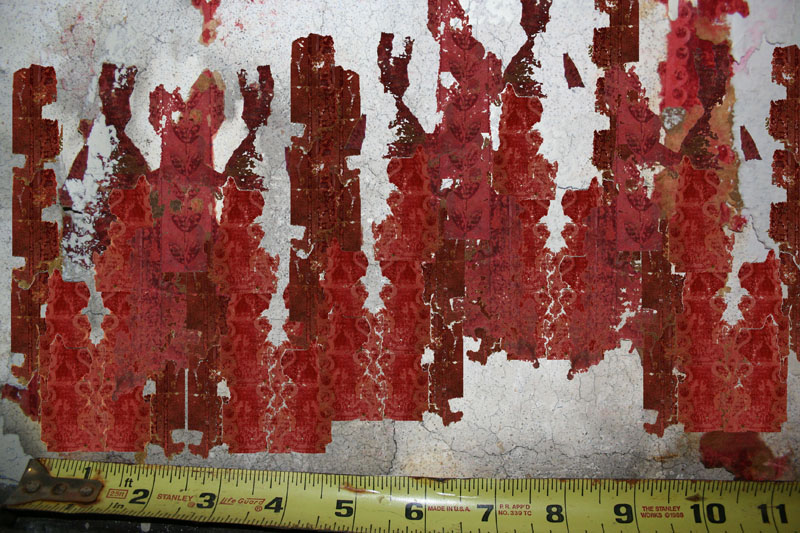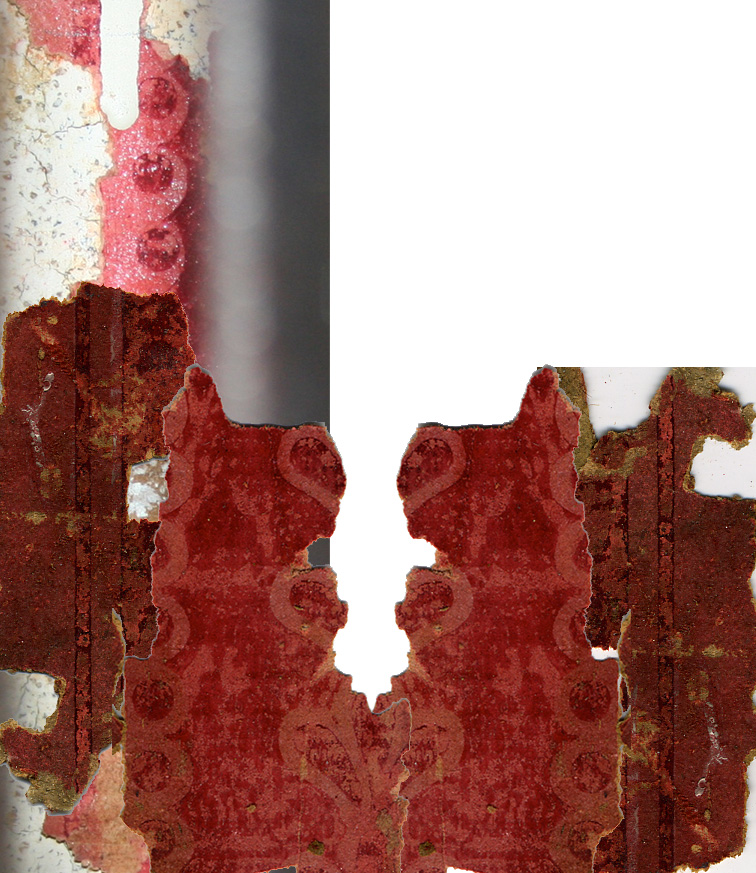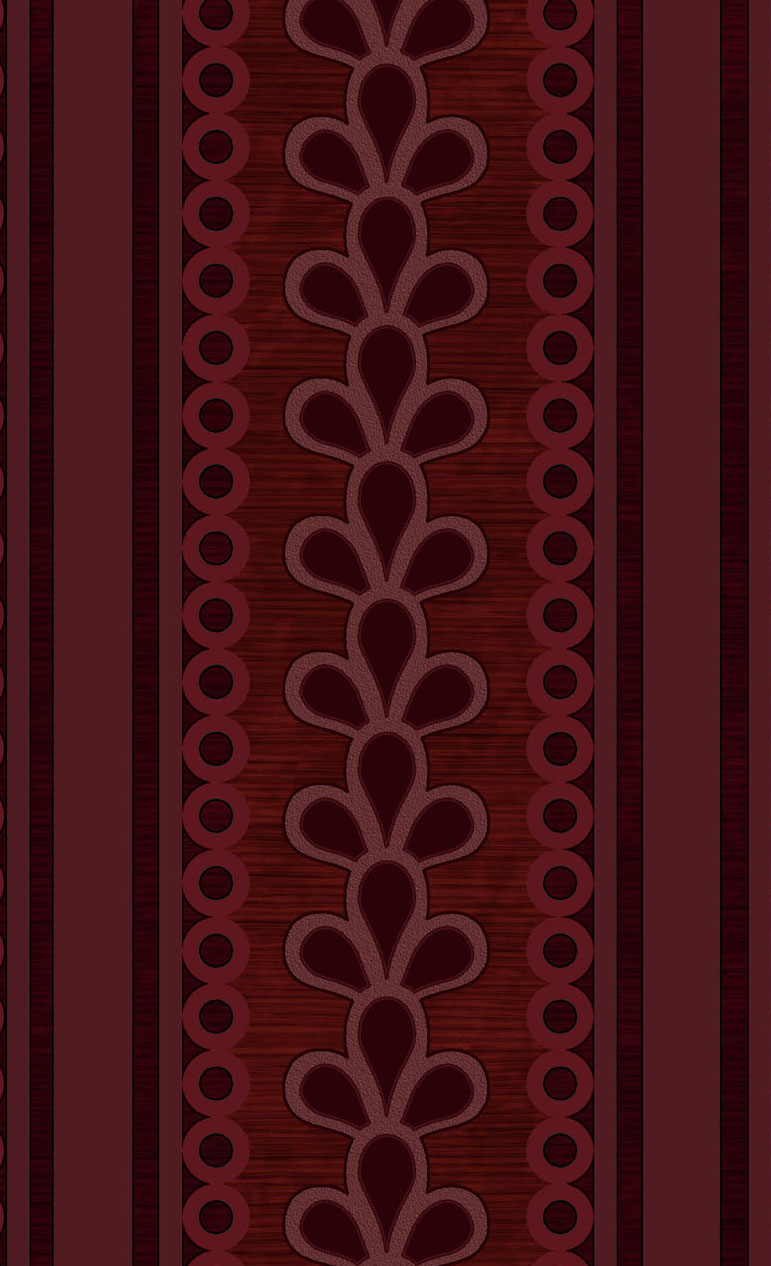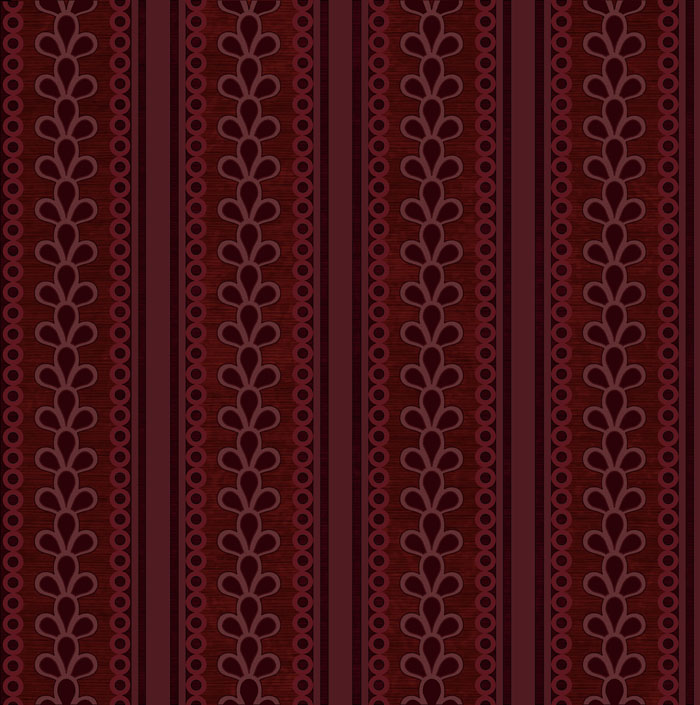An epic campaign ended today as the first rolls of historic wallpaper were applied to the walls of the FDR Suite study. You may remember all the trials and tribulations we had in piecing together the pattern from fragments I discovered last summer behind the large radiator. Then Kari Pei, Head of Design at Wolf-Gordon in NYC (and wife to Li-Chung Pei. Adams, ’72) who had generously offered to recreate the paper, began an almost year-long process of back and forth design and redesign, trying to replicate a period look and feel using the latest digital techniques. A thousand problems along the way – wrong color palettes, wiggly lines, fuzzy digitals – were eventually overcome, and today, thanks to the Peis’ marvelous generosity in donating both the design labor plus the cost of the paper, we at last have a good estimation of the pattern that graced the walls during FDR’s tenure at Westmorly Court.
Here are two very quick progress shots, taken this afternoon as the workman prepared paste and paper. (Keep in mind these are snaps, taken with flash, and the actual colors are considerably deeper in real life.) The first shows all the furniture crowded into the center of the room, and the newly papered walls. The effect of the narrow pattern is surprisingly cloth-like, and quite masculine in feel. Note too how the ornate period radiator (recently restored) and new light fixtures suddenly come to life against the patterned background.
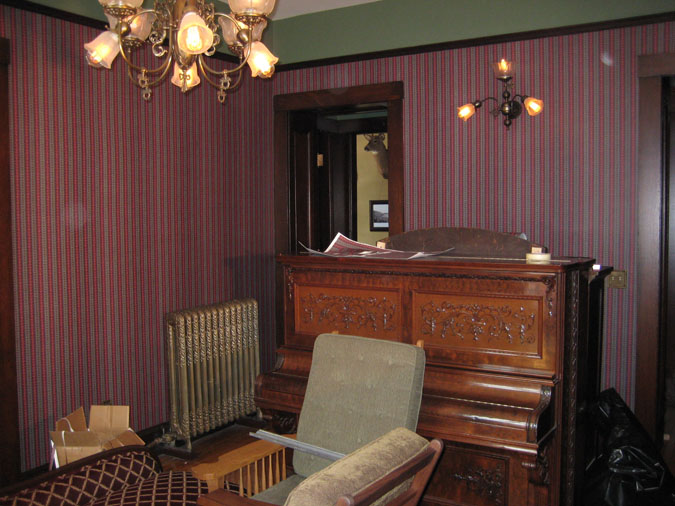
And here’s another shot, showing a section of wall we had temporarily painted, and the newly papered wall in comparison. It’s amazing how much richer the papered surface appears than the flat paint. We’re finally getting the feel of a real Victorian room!
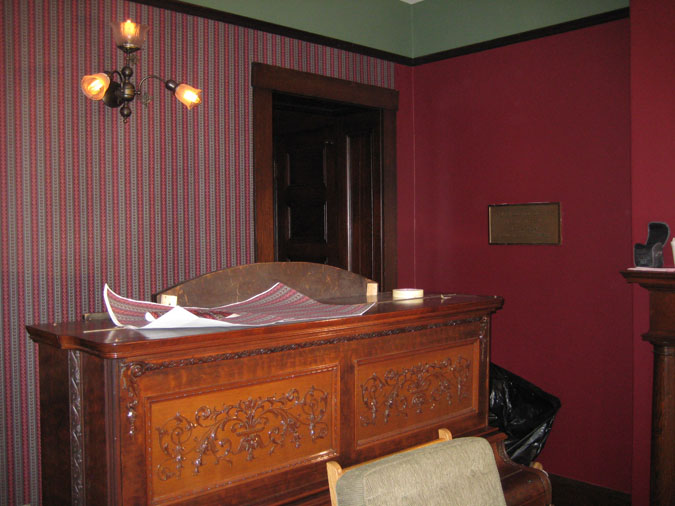
Now all we have to do is put everything back in place! Updated higher quality photos to follow…
Once again, we at the Foundation and everyone at Adams House would like to express our heartiest thanks to the Pei’s for the extremely generous donation of time, effort and funds to complete this project!



